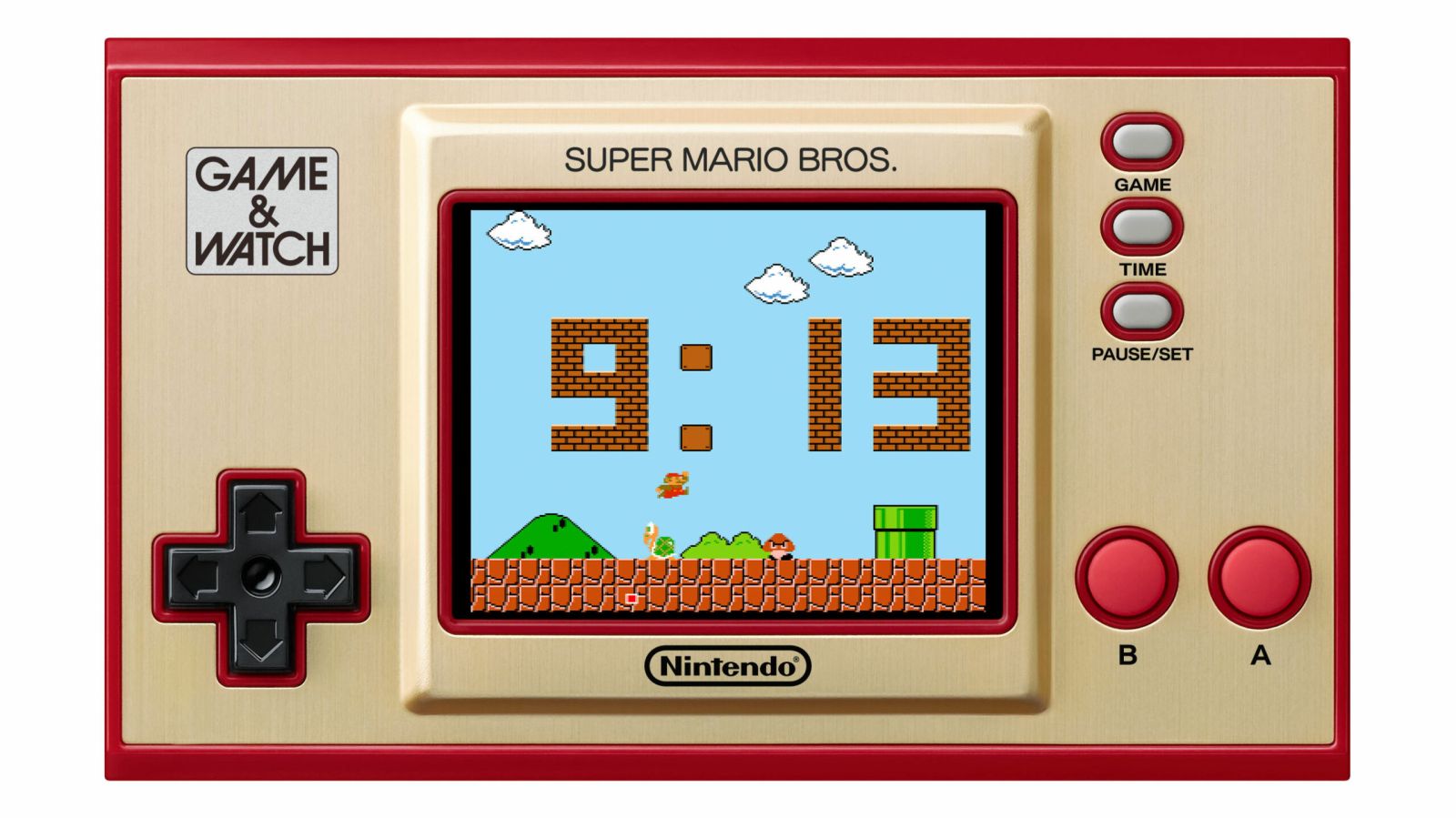全球首款攜帶式主機:Game & Watch
Game & Watch系列是由任天堂於1980年代推出的一系列掌上遊戲機,其誕生開啟攜帶式主機市場。由工程師横井軍平設計,是世界上首個成功的攜帶式設備,開創電子遊戲的新時代。
內部基本設計包括一個簡單的液晶顯示屏(LCD)和一個固定的遊戲,以其小巧輕便的設計和易於操作的玩法著稱。使用一顆微型電池,具有相當長的電池壽命,這也是其成功的關鍵之一。每台Game & Watch主機僅有一款固定的遊戲,並配有數字時鐘功能,因此得名“Game & Watch”。規格方面,主機使用的是簡單的黑白液晶顯示屏,早期的型號僅支持單色顯示,後期型號引入多色顯示技術。每個型號的大小和形狀可能略有不同,但大多數都採用橫向或縱向的設計,並配有基本的按鈕控制,如方向鍵和一個或兩個操作按鈕。Game & Watch系列的遊戲非常簡單,通常是基於時間或得分的挑戰,非常適合短時間遊玩。
主機的優點在於其設計簡潔、操作簡單、攜帶方便,並且擁有極佳的電池續航時間。這些特點使其成為80年代兒童和青少年的理想選擇。操作雖然簡單,但卻極具挑戰性和娛樂性,能夠吸引玩家反覆遊玩。然而,Game & Watch也存在一些缺點。首先,由於每台主機只能玩一款固定的遊戲,選擇非常有限。一旦對遊戲失去興趣,使用價值就會降低。與後來的攜帶式遊戲機相比,畫面和操作體驗顯得過於簡單,缺乏多樣性和深度。此外,因為是用液晶螢幕,存放久以後畫面容易產生漏液黑化。每次使用後須要拿出電池,否則長期下來容易腐化。
在銷售方面,Game & Watch系列取得驚人的成功。從1980年首次推出到1991年停產,種類有50款以上,全球總銷量超過4300萬台。這數據顯示其在市場上的受歡迎程度,特別是在80年代早期,當時市場上並沒有太多競爭產品,該主機幾乎成為便攜式遊戲的代名詞。該系列主機包括多個版本和遊戲主題,如「Ball」、「Parachute」、「Octopus」等。隨著時間的推移,任天堂也推出不同形狀和功能的機型,如雙屏設計的「Multi Screen」系列,這也是後來DS設計的靈感來源之一。
市場評價方面,Game & Watch被視為開創攜帶式遊戲機的新時代。許多玩家和評論家認為,不僅在技術上創新,還通過簡單而富有挑戰性的設計,成功地吸引大批忠實的粉絲。然而,隨著技術的進步和市場需求的變化,Game & Watch的簡單設計逐漸失去競爭力。1989年,Game Boy上市,能夠運行多款遊戲卡帶,擁有更大的遊戲選擇和更複雜的遊戲體驗。很快取代Game & Watch,成為市場的主力產品。最終,Game & Watch在90年代初逐漸被淘汰,結束它在遊戲市場上的使命。
儘管最終被淘汰,但其作為攜帶式遊戲機市場的先驅,對後來的產業設計和發展產生深遠的影響。Game & Watch至今仍然被許多遊戲歷史學家和收藏家視為經典,並且在任天堂後來的產品中,如任天堂DS系列,仍能看到其設計理念的延續。
The Game & Watch series, released by Nintendo in the 1980s, was a pioneering line of handheld game consoles that launched the portable gaming market. Designed by engineer Gunpei Yokoi, it became the world's first successful portable gaming device, ushering in a new era in electronic entertainment.
The internal design of these consoles was straightforward, featuring a simple liquid crystal display (LCD) and a single fixed game. They were known for their compact and lightweight design, as well as their ease of use. Each Game & Watch device was powered by a small battery, providing a remarkably long battery life—one of the key factors behind the series' success. In addition to the game, each device also featured a digital clock, hence the name "Game & Watch."
In terms of specifications, the Game & Watch series used simple black-and-white LCDs. Early models supported only monochrome displays, while later versions introduced multi-color display technology. The size and shape of each model varied slightly, but most adopted either a horizontal or vertical design and featured basic button controls such as directional buttons and one or two action buttons. The games in the Game & Watch series were typically simple, often revolving around time or score challenges, making them ideal for short bursts of play.
The main advantages of the Game & Watch series were its simple design, ease of operation, portability, and excellent battery life. These features made it an ideal choice for children and teenagers in the 1980s. While the controls were simple, the games were challenging and entertaining, attracting players to play repeatedly.
However, the Game & Watch series had some drawbacks. The most significant limitation was that each console could only play one fixed game, offering limited choice. Once players lost interest in the game, the device's value diminished. Compared to later portable gaming consoles, the graphics and gameplay experience were overly simplistic, lacking variety and depth. Additionally, the LCD screens could degrade over time, leading to issues like screen leakage or darkening. It was also advisable to remove the battery after use to prevent corrosion from prolonged storage.
In terms of sales, the Game & Watch series was incredibly successful. From its initial release in 1980 until its discontinuation in 1991, over 50 different models were produced, with global sales exceeding 43 million units. These figures highlight its popularity, particularly in the early 1980s when there were few competing products, making the Game & Watch nearly synonymous with portable gaming.
The series included multiple versions and game themes, such as "Ball," "Parachute," and "Octopus." Over time, Nintendo introduced models with different shapes and features, such as the "Multi Screen" series with dual screens, which later inspired the design of the Nintendo DS.
Market reception of the Game & Watch series was overwhelmingly positive. It was seen as the beginning of a new era in portable gaming. Many players and critics praised the series not only for its technological innovation but also for its simple yet challenging designs that successfully captivated a loyal fan base.
However, as technology advanced and market demands shifted, the simple design of the Game & Watch series gradually lost its competitive edge. In 1989, the Game Boy was released, capable of running multiple game cartridges and offering a broader selection of more complex gaming experiences. The Game Boy quickly became the dominant product in the market, replacing the Game & Watch series. By the early 1990s, the Game & Watch series was phased out, ending its run in the gaming market.
Despite its eventual discontinuation, the Game & Watch series remains a pioneer in the portable gaming market, having a profound impact on later industry design and development. Today, it is still regarded as a classic by many gaming historians and collectors, and its design philosophy can be seen in later Nintendo products, such as the Nintendo DS series.

照片:產品官網
- 1
- 2
- 3
- 4
